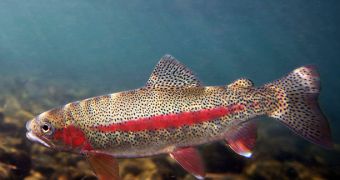Recent news from the US Environmental Protection Agency informs us that a total of $25 million (€19.4 million) are to soon be spent on cleaning up the site of a former copper mine in Elko County, Nevada.
Apparently, cleaning up the site in the Rio Tinto Mine and its surroundings is intended to help up water quality in Mill Creek and the East Fork Owyhee River. It is presumed that this will in turn help protect the local redband trout population.
Thus, the cleanup activities will first and foremost target mine tailings, which are basically leftover material resulting from the operation of separating the valuable fraction from the uneconomic one.
The official website for the US Environmental Protection Agency informs us that the four companies that agreed to provide the necessary funding for this green-oriented project are Atlantic Richfield Company, DuPont and Company, Cleveland-Cliffs Iron Company and Teck American Inc.
Taken together, these four companies are to form a consortium known as Mountain City Remediation.
In case anyone was wondering, these companies agreed to finance the cleaning activities at that former mining site because they were the corporate successors of the companies that operated the Rio Tinte Mine between 1932-1976.
The same source informs us that the state of Nevada will be in charge of overseeing the cleanup activities, and that both EPA and the Shoshone Paiute Tribes will become actively involved in this project by regularly providing input.
Commenting on this environmental campaign, Jared Blumenfeld, presently employed as EPA'a Regional Administrator for the Pacific Southwest, made a case of how, “This project is a great example of federal, state and tribal agencies working side-by-side to reach a cleanup agreement with private parties.”
Backing up his statement, Tribal Chairman Terry Gibson explained how, “The cleanup effort at the Rio Tinto Mine is very encouraging, and is an essential step to restoring and protecting these cultural resources, not only for today, but for generations to come.”

 14 DAY TRIAL //
14 DAY TRIAL //